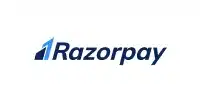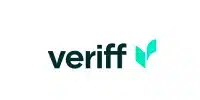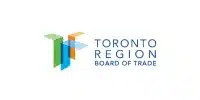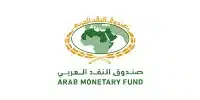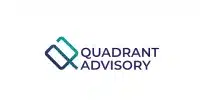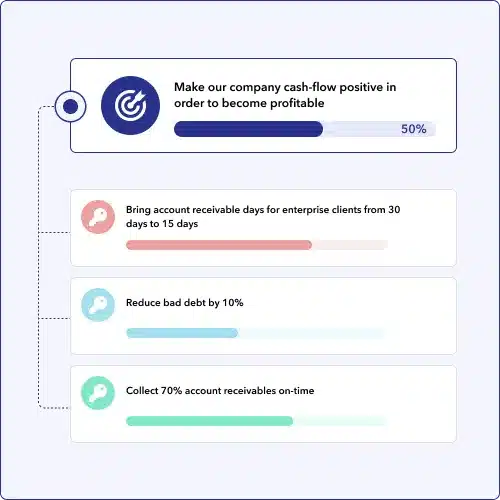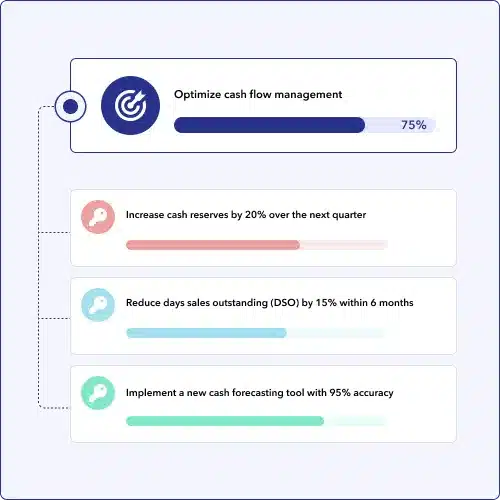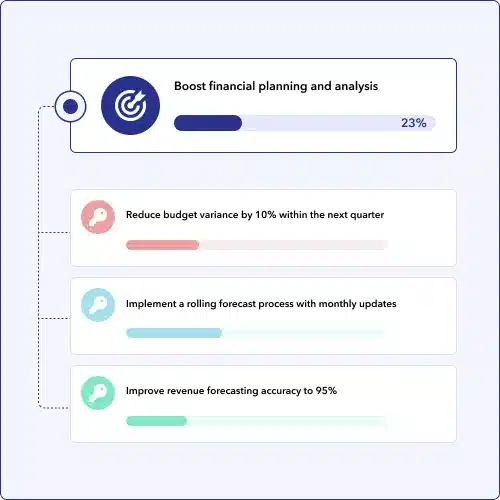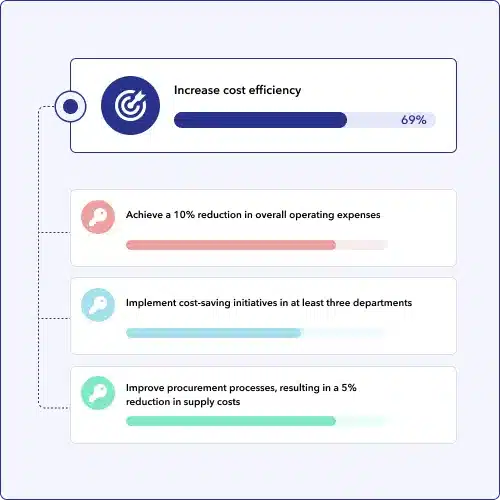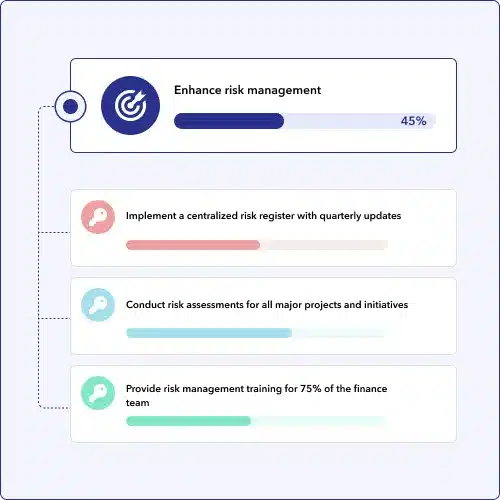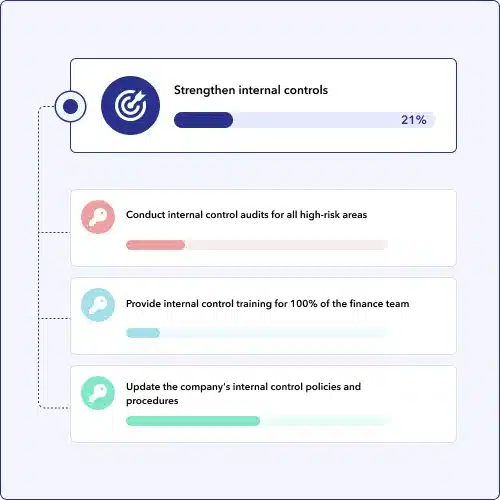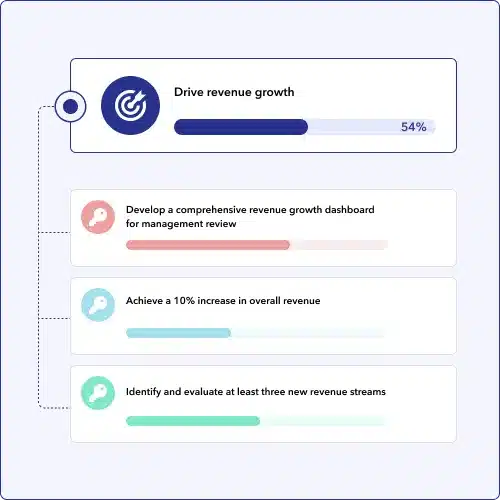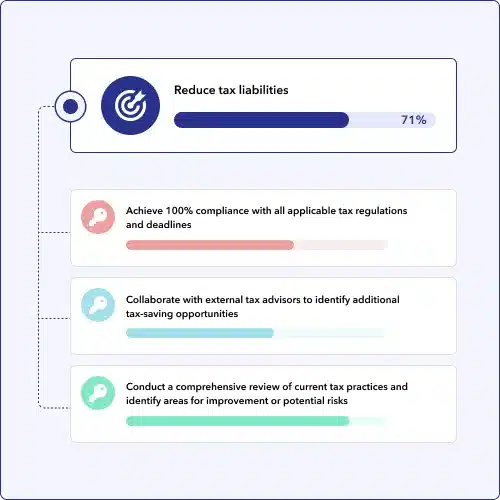How do we align finance OKRs with the overall company strategy?
To ensure alignment, develop finance OKRs that support the company’s strategic objectives. Collaborate with other departments and the executive team to understand their goals and determine how the finance team can contribute to achieving them.
How often should we update or review our finance OKRs?
Regularly reviewing and updating OKRs is essential for tracking progress and maintaining focus. Finance teams should review their OKRs at least quarterly, with more frequent check-ins (e.g., monthly) for short-term or high-priority objectives.
How do we set realistic and achievable key results for our finance OKRs?
When setting key results, use historical data, benchmarks, and current performance to set realistic targets. Ensure that key results are measurable and have specific timeframes. Prioritize initiatives that have the most significant impact on the overall objective.
How do we ensure all team members understand and contribute to our finance OKRs?
Communicate the OKRs clearly to all team members and explain their relevance to the overall company strategy. Provide resources and training to help them understand and contribute to the OKRs. Encourage a collaborative environment where team members can share ideas and support each other in achieving the OKRs.
How do we measure and track progress on our finance OKRs?
Implement tools and processes to monitor key results regularly. Develop financial dashboards or reporting systems that provide real-time visibility into progress. Schedule regular check-ins or meetings to discuss updates and address any challenges or roadblocks.




